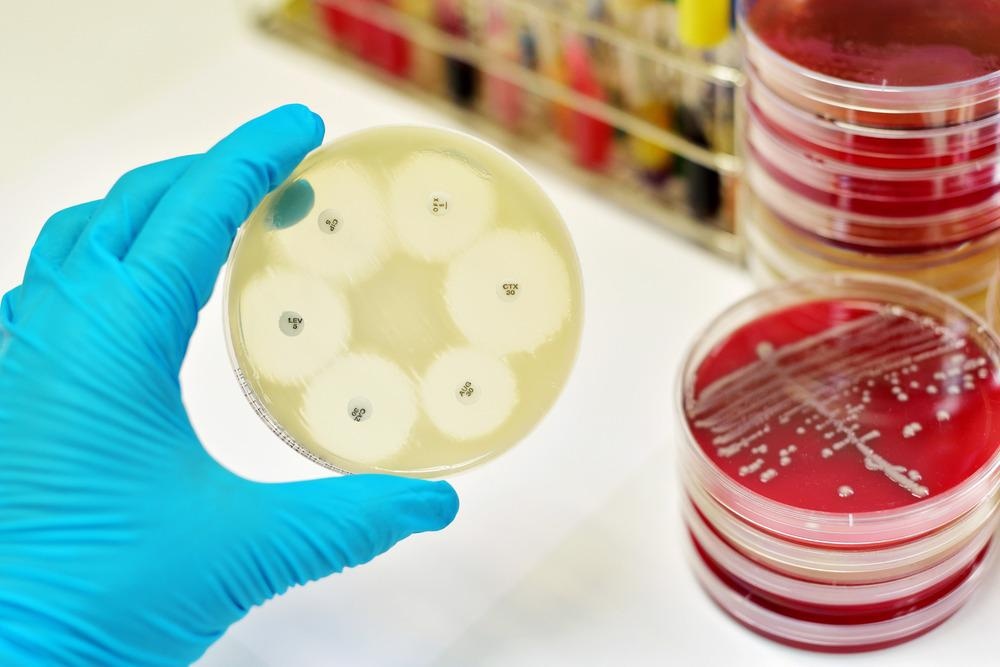In a study recently published in the journal Sensors and Actuators: B. Chemical, two kinds of pH-sensitive nanoparticles (NPs) were developed.

Study: pH-responsive nanoparticles and automated detection apparatus for dual detection of pathogenic bacteria. Image Credit: Jarun Ontakrai/Shutterstock.com
Of these, one included aptamers as the identification molecule and the other with pH markers as the carrier. Both were found to react swiftly to harmful bacteria and display distinct color changes, creating an automated device for double detection of dangerous pathogens namely Escherichia coli (E. coli) and Salmonella typhimurium (S. T.).
Prevalence of Food-Borne Pathogens
Food-borne infections can cause severe illnesses and are a growing medical concern throughout the globe. Bacterial contamination can happen during any step of food manufacturing and distribution process, making it challenging to prevent food-borne infections.
Since E. coli and Salmonella are two of the most commonly spread pathogenic bacteria that pose a major threat to human food standards, the mitigation and tracking of both pathogens is an important area of modern research.
From 2006 to 2019, E. coli-contaminated leafy vegetables such as cos lettuce were linked to almost 50 outbreaks of E. coli illnesses across several states. S. T. is commonly transmitted via compromised food, and over 40,000 occurrences of Salmonella infections are recorded in the U. S. annually.
Rapid screening and prompt identification of harmful bacteria in food are critical for ensuring food safety and reducing the occurrence of food-borne infections.
Biosensors for Detection of Pathogens
Biosensors have recently emerged as a novel device for detecting food-borne infections. A biosensor, which is a diagnostic instrument that transforms identifiable biological stimuli into directly quantifiable signals, often incorporates immobilized bio-recognition molecules. Its features include quick detection, ease of operation, strong selectivity, good accuracy, responsiveness, automated working and analysis, strong integration, and compactness.
Conventional food-borne pathogen detecting systems available utilize antibody-antigen detection technology. Their operation is complicated, demanding a set of arduous phases such as filtration and retrieval, which prolongs the operation time and necessitates a certain level of operator professionalism, preventing rapid analysis.
The aptamer-based analytical approach has a lot of promise, can distinguish particular targets, and has a wide range of applications. Aptamers have been utilized as information carriers for particular target identification.
Nanoparticles are also employed in the development of sensors due to their unique features. The sensing approach that relies on nanoparticles and apatmer primarily consists of three steps: the aptamer functions as the sensor's probe for identification and binding of the target; nanoparticles then function as a sensing platform by responding to identification signals; finally, the receiver identifies changes in chemical and physical properties of substances and wraps up the signal transformation and processing approach.
Colorimetric and fluorescence approaches utilizing aptamer can replace conventional detection techniques for achieving quick detection. In neutral settings, phenolphthalein (PP) and thymolphthalein indicators (TP) are colorless. When subjected to basic conditions, they change to red and blue, respectively. They respond quickly to changes in pH and have been utilized as responsive signal molecules for colorimetry.
How the Automated Detection Device Works
The team introduced a colorimetric aptasensor to detect E. coli and Salmonella, which used an aptamer for the sensor's identification element and a pH marker as the carrier. The whole detecting procedure is fully automated. The suggested technologies have the potential to be used in the early detection and control of harmful pathogens.
This work presented a unique biosensor for detecting E. coli and Salmonella using an aptamer as the sensor's identification component and a pH marker as the carrier. Furthermore, bovine albumin (BSA) was added to the surface of the NPs as a stabilizer to inhibit non-specific binding sites, and pH-sensitive nanoparticles were generated by self-assembly. The best synthesis ratio of two kinds of NPs is chosen to build nanoparticles with acceptable sensitivity and selectivity for detecting E. coli and S. T.
To Conclude
The study shows a new colorimetric aptasensor for simultaneous quick quantitative identification of harmful microorganisms. The sensor can detect E. coli and S.T simultaneously and offers high-throughput, automated, and one-button detection.
When compared to standard HPLC, it has the benefits of low price, high efficiency, ease of operation, and so on, and may fully eliminate the need for specialists. This effort is projected to help the industry of risk prevention, regulation, and monitoring become more convenient, efficient, and automated.
Continue reading: How Microbes are Making Nanotechnology More Eco-Friendly.
Reference
Yan, C., Sun, Y., Yao, M., & Jin, X. (2021) pH-responsive nanoparticles and automated detection apparatus for dual detection of pathogenic bacteria. Sensors and Actuators: B. Chemical. Available at: https://www.sciencedirect.com/science/article/pii/S0925400521016853?via%3Dihub
Disclaimer: The views expressed here are those of the author expressed in their private capacity and do not necessarily represent the views of AZoM.com Limited T/A AZoNetwork the owner and operator of this website. This disclaimer forms part of the Terms and conditions of use of this website.